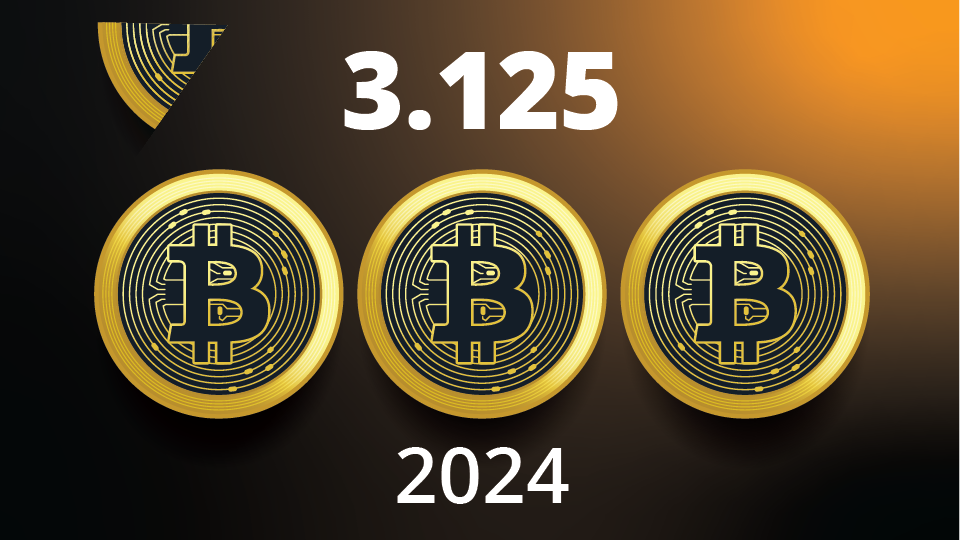A Glimpse into the Future of Gaming
October 24, 2022
Read Time 8 MIN
In a crypto bear market that has seen trillions in digital assets valuations disappear, crypto gaming continues to attract significant early-stage funding. Depending on the report, blockchain gaming raised anywhere from $874 million to $4 billion in 2021.1 As a percentage of funds raised in the crypto ecosystem, gaming has taken considerable market share in 2022. It seems many early-stage investors agree with the thesis that the next 100 million new crypto users will be onboarded to crypto via leisure activities like gaming.
Considering the broader landscape of crypto segments (including DeFi, Infrastructure, Payments), we believe that gaming may present the path of least resistance for two main reasons:
- The total addressable market (TAM) in traditional gaming is massive. According to Newzoo, nearly 3.2 billion people in the world will play a form of digital games in 2022.
- Gaming is a digitally-native activity, and in-game items (aka digital assets) are already being bought and used by hundreds of millions of gamers around the world.
Even among crypto-focused analysts and thought leaders, gaming can sometimes be dismissed. At a recent crypto event, the author used Fortnite as an example to argue how a traditional game could onboard millions of new crypto users by launching an NFT. To our surprise, we were told Fortnite was “too niche” of a platform to pull it off. We believe this is flawed logic, and want to reiterate that in many ways, gaming represents a ready-made platform to onboard the next generation of crypto users and advocates.
All it would take is ONE of the below games offering an NFT package as a one-off digital item to get millions of users to create their first crypto wallet.
| “Niche” Traditional Video Game Average Monthly Players | |
| Game | Average Monthly Users |
| Fortnite | 253,565,010 |
| Roblox | 203,856,011 |
| Garena Free Fire | 190,522,602 |
| Call of Duty Mobile | 56,750,114 |
| Grand Theft Auto V | 16,897,566 |
Source: activeplayer.io as of 9/30/2022.
An Introduction to Crypto Games: The Landscape Today
The crypto game narrative has been heavy on hype and light on delivery. One of the sector’s first mainstream success stories, Axie Infinity, suffered a $620 million-dollar hack in March of 2022, which led to a mass exodus of users and a roughly 85% decline in the game’s token AXS. Popular “move-to-earn” game STEPN’s GMT token is down 85% from its peak as the game lost half the number of users since this summer. Without sustainable fun and a compelling “sink” for in-game tokens (discounts on real products or use in DeFi), most have failed to find sustainable product market fit.
Just like traditional gaming, crypto gaming is filled with a variety of games. These include auto-battlers, card-based, idle, move-to-earn, first-person shooters, role-playing, arcade, MOBA and mobile, which is comprised of its own mini-universe of game types.
Below is a selection of the top games according to unique active wallets and a breakdown of the gaming universe by category.
| Top Played On-Chain Games (Last 30 Days) | ||||
| Game | Blockchain | Genre | Description | 30-day Unique Active Wallets (thousands) |
| Alien Worlds | Wax | Mining/TCG | Mine $TRILIUM and stake it to Planet DAOs or acquire cards for missions/battling. | 608.91 |
| Sweat | Near | Move-2-Earn | Get rewarded with $SWEAT for every step you walk. Users can redeem $SWEAT for in-app deals or swap for other tokens. | 643.54 |
| Benji Bananas | Polygon | Mobile Casual | Swing throughout the jungle collecting bananas to pass the level & earn $PRIMATE. | 418.11 |
| Trickshot Blitz | Flow | Mobile Casual | Play 8-ball pool and earn $RLY tokens when you win. | 335.41 |
| Splinterlands | Hive | Collectible TCG | Collect various cards and defeat opponents in an auto-battler format. | 331.43 |
Source: DappRadar as of 10/19/2022.
Weekly Users by Genre
Source: DappRadar, Dune as of 9/30/2022.
We see a few key takeaways when examining the most popular current games and categories as they stand today:
Mobile is the largest segment, just like in traditional gaming. Mobile gaming has grown to be a massive category for traditional gaming and has generated the majority of growth in revenues over the past few years. It is encouraging to see crypto gaming leaning into the same high-growth distribution platform that has served traditional gaming well. Casual mobile games, in particular, have helped to bring non-gamers into the fold, and convert them into paying customers.
On-chain dynamics create opportunities for new types of games. Move-to-earn, in particular, represents a completely new form of gaming that rewards players who participate in activities like walking or exercising. While video game-based exercise games have existed for years, on-chain games actually pay users crypto tokens, which incentivizes new users to start and continue playing.
Category gaps exist between traditional and crypto games, creating white space for growth. First-person shooters, open-world RPGs and sports games are some of the top categories of traditional gaming, which are not currently represented in the top crypto games or categories. This indicates that the crypto gaming industry has the opportunity to grow into these very popular categories and potentially steal market share from the traditional gaming industry from the hundreds of millions of gamers who are already playing these types of games.
EV.io: A Hybrid Gaming Model
We think that a hybrid gaming model that prioritizes gameplay first, with crypto as a secondary feature, could lead to a massive onboarding of new crypto users. EV.io is a Solana NFT-enabled game developed by a small team operating under publicly-traded Enthusiast Gaming. EV.io exemplifies this “game first, crypto second” approach to gaming by incorporating NFTs as a secondary feature on top of a fun, playable game. Unlike the crypto games listed above, EV.io is not played on-chain, meaning that the majority of gameplay is not logged on a blockchain. While certain EV.io NFTs do provide utility in the form of earned crypto, the game stands on its own without crypto integration. Because EV.io is not completely on-chain, it does not show up as a game on popular crypto data platforms like DappRadar. According to similarweb.com, EV.io boasts approximately 619,000 visitors per month, with over 400,000 registered users and 6,366 NFTs. While not an apples-to-apples comparison with unique active wallets, it’s clear that a large number of people are actively playing the game.
What Makes EV.io Unique?
Accessibility. EV.io is a browser-based game, meaning there is no installation required to play. According to its developer team, EV.io was designed to play on any computer, meaning it will work even if the gamer is playing “on a 10-year-old Chromebook.” This allows gamers who don’t have an Xbox, Playstation or gaming PC to play as long as they have internet connection. This lower cost of entry echoes the success of the mobile gaming market, which allows anyone with a cheap smartphone to play games, effectively broadening the total available market to the majority of the world.
Accessibility also refers to the characteristics of the accompanying NFT ecosystem. Unlike some crypto games which have a prohibitively high cost of entry, NFTs are not required to play Ev.io. If a gamer plays EV.io and wants to purchase a skin or weapon on EV.io, they can mint an NFT or buy one on a secondary marketplace. Crucially, these NFTs have much lower price floors, meaning gamers can purchase an NFT for roughly the same price as a new AAA-game ($60 USD).
Fun to play. For anyone familiar with classic games like Halo and Call of Duty, EV.io is immediately playable and fun. The VanEck team recognized the familiar mechanics of a well-designed first-person shooter after booting up EV.io for the first time. The game reminds us of our glory days in college, staying up until 4am playing Halo in the dorm room.
Crypto mechanics are secondary to gameplay. EV.io was originally launched without NFT capabilities on the classic flash-game website addictinggames.com. It is first and foremost a standalone game in which developers have then incorporated NFT and blockchain (P2E) mechanics. This is a key differentiator between the majority of crypto games that are on the market. To play most of these other games, first, the gamer has to fund an NFT wallet, buy the NFTs required to play, and then actually play the game. This forced march is prohibitive to growth in a gaming environment. Gamers are leery of developers looking to further divide up content into smaller and smaller ‘micro-transactions.’ As we’ve discussed before, NFTs and crypto can be considered bad words within the traditional gaming community, and many prominent gamers and influencers are decidedly anti-crypto.
Revenue Model, Rewards and Growth Strategy
EV.io generates revenue by selling ad space within the actual game to companies who want to target the EV.io demographic. Brands have been using in-game advertisements to reach certain demographics for years, and this strategy continues to attract brands and organizations looking to extend their reach. Advertising revenues fund the game’s ongoing maintenance, marketing and development, in addition to funding the rewards pool for NFT holders.
Owners of certain utility NFTs can earn “e” by owning an EV.io NFT and completing specific in-game tasks. A gamer’s “e” can then be converted to Solana. Gamers are incentivized, but not required, to own an NFT to fully participate in the game.
In contrast to some of the more popular crypto games available, EV.io does not lean on earnings potential or investing as a main way to attract new players. The top EV.io player has earned the $USD equivalent of roughly $629,2 but some of the top players are earning more by competing in various tournaments. According to EV.io, over $100,000 in prize money has been paid through P2E and tournaments in 2022.
This leads us to the project’s growth strategy going forward. Esports is a major part of the game’s plan for discovering new players. The game’s parent company, Enthusiast Gaming, also owns Luminosity Gaming, an esports and entertainment platform. EV.io’s connection with Luminosity Gaming creates natural synergies, including leveraging some of Luminosity’s popular influencers to advertise the game on their streams. EV.io’s first esports tournament with Fractal had 240,000 views on Twitch,3 indicating the potential for a captive audience on the largest streaming platform.
Closing Thoughts
We believe that crypto gaming has the potential to onboard millions of new crypto participants. Traditional gaming is a multi-billion dollar global industry, supported by billions of players from around the world. Despite its potential for massive global adoption, we see shortcomings in the current offerings that new crypto games (like EV.io) are addressing directly. By providing an accessible, fun game that prioritizes gameplay over crypto mechanics, we believe that EV.io is forging a new, unique path that could potentially lead to growth within the crypto gaming segment.
To receive more Digital Assets insights, sign up in our subscription center.
Related Topics
Related Insights
IMPORTANT DISCLOSURES
Sources:
1 Cointelegraph, Blockworks.
2 EV.io as of 9/30/22.
3 EV.io.
Please note that VanEck may offer investments products that invest in the asset class(es) or industries included in this blog.
This is not an offer to buy or sell, or a recommendation to buy or sell any of the cryptocurrencies mentioned herein. The information presented does not involve the rendering of personalized investment, financial, legal, or tax advice. Certain statements contained herein may constitute projections, forecasts and other forward looking statements, which do not reflect actual results, are valid as of the date of this communication and subject to change without notice. Information provided by third party sources are believed to be reliable and have not been independently verified for accuracy or completeness and cannot be guaranteed. VanEck does not guarantee the accuracy of third party data. The information herein represents the opinion of the author(s), but not necessarily those of VanEck.
Cryptocurrency is a digital representation of value that functions as a medium of exchange, a unit of account, or a store of value, but it does not have legal tender status. Cryptocurrencies are sometimes exchanged for U.S. dollars or other currencies around the world, but they are not generally backed or supported by any government or central bank. Their value is completely derived by market forces of supply and demand, and they are more volatile than traditional currencies. The value of cryptocurrency may be derived from the continued willingness of market participants to exchange fiat currency for cryptocurrency, which may result in the potential for permanent and total loss of value of a particular cryptocurrency should the market for that cryptocurrency disappear. Cryptocurrencies are not covered by either FDIC or SIPC insurance. Legislative and regulatory changes or actions at the state, federal, or international level may adversely affect the use, transfer, exchange, and value of cryptocurrency.
Investing in cryptocurrencies comes with a number of risks, including volatile market price swings or flash crashes, market manipulation, and cybersecurity risks. In addition, cryptocurrency markets and exchanges are not regulated with the same controls or customer protections available in equity, option, futures, or foreign exchange investing. There is no assurance that a person who accepts a cryptocurrency as payment today will continue to do so in the future.
Investors should conduct extensive research into the legitimacy of each individual cryptocurrency, including its platform, before investing. The features, functions, characteristics, operation, use and other properties of the specific cryptocurrency may be complex, technical, or difficult to understand or evaluate. The cryptocurrency may be vulnerable to attacks on the security, integrity or operation, including attacks using computing power sufficient to overwhelm the normal operation of the cryptocurrency’s blockchain or other underlying technology. Some cryptocurrency transactions will be deemed to be made when recorded on a public ledger, which is not necessarily the date or time that a transaction may have been initiated.
- Investors must have the financial ability, sophistication and willingness to bear the risks of an investment and a potential total loss of their entire investment in cryptocurrency.
- An investment in cryptocurrency is not suitable or desirable for all investors.
- Cryptocurrency has limited operating history or performance.
- Fees and expenses associated with a cryptocurrency investment may be substantial.
There may be risks posed by the lack of regulation for cryptocurrencies and any future regulatory developments could affect the viability and expansion of the use of cryptocurrencies.
Investors should conduct extensive research before investing in cryptocurrencies. Information provided by Van Eck is not intended to be, nor should it be construed as financial, tax or legal advice. It is not a recommendation to buy or sell an interest in cryptocurrencies.
All investing is subject to risk, including the possible loss of the money you invest. As with any investment strategy, there is no guarantee that investment objectives will be met and investors may lose money. Diversification does not ensure a profit or protect against a loss in a declining market. Past performance is no guarantee of future results.
© Van Eck Securities Corporation, Distributor, a wholly owned subsidiary of Van Eck Associates Corporation.
Related Funds
IMPORTANT DISCLOSURES
Sources:
1 Cointelegraph, Blockworks.
2 EV.io as of 9/30/22.
3 EV.io.
Please note that VanEck may offer investments products that invest in the asset class(es) or industries included in this blog.
This is not an offer to buy or sell, or a recommendation to buy or sell any of the cryptocurrencies mentioned herein. The information presented does not involve the rendering of personalized investment, financial, legal, or tax advice. Certain statements contained herein may constitute projections, forecasts and other forward looking statements, which do not reflect actual results, are valid as of the date of this communication and subject to change without notice. Information provided by third party sources are believed to be reliable and have not been independently verified for accuracy or completeness and cannot be guaranteed. VanEck does not guarantee the accuracy of third party data. The information herein represents the opinion of the author(s), but not necessarily those of VanEck.
Cryptocurrency is a digital representation of value that functions as a medium of exchange, a unit of account, or a store of value, but it does not have legal tender status. Cryptocurrencies are sometimes exchanged for U.S. dollars or other currencies around the world, but they are not generally backed or supported by any government or central bank. Their value is completely derived by market forces of supply and demand, and they are more volatile than traditional currencies. The value of cryptocurrency may be derived from the continued willingness of market participants to exchange fiat currency for cryptocurrency, which may result in the potential for permanent and total loss of value of a particular cryptocurrency should the market for that cryptocurrency disappear. Cryptocurrencies are not covered by either FDIC or SIPC insurance. Legislative and regulatory changes or actions at the state, federal, or international level may adversely affect the use, transfer, exchange, and value of cryptocurrency.
Investing in cryptocurrencies comes with a number of risks, including volatile market price swings or flash crashes, market manipulation, and cybersecurity risks. In addition, cryptocurrency markets and exchanges are not regulated with the same controls or customer protections available in equity, option, futures, or foreign exchange investing. There is no assurance that a person who accepts a cryptocurrency as payment today will continue to do so in the future.
Investors should conduct extensive research into the legitimacy of each individual cryptocurrency, including its platform, before investing. The features, functions, characteristics, operation, use and other properties of the specific cryptocurrency may be complex, technical, or difficult to understand or evaluate. The cryptocurrency may be vulnerable to attacks on the security, integrity or operation, including attacks using computing power sufficient to overwhelm the normal operation of the cryptocurrency’s blockchain or other underlying technology. Some cryptocurrency transactions will be deemed to be made when recorded on a public ledger, which is not necessarily the date or time that a transaction may have been initiated.
- Investors must have the financial ability, sophistication and willingness to bear the risks of an investment and a potential total loss of their entire investment in cryptocurrency.
- An investment in cryptocurrency is not suitable or desirable for all investors.
- Cryptocurrency has limited operating history or performance.
- Fees and expenses associated with a cryptocurrency investment may be substantial.
There may be risks posed by the lack of regulation for cryptocurrencies and any future regulatory developments could affect the viability and expansion of the use of cryptocurrencies.
Investors should conduct extensive research before investing in cryptocurrencies. Information provided by Van Eck is not intended to be, nor should it be construed as financial, tax or legal advice. It is not a recommendation to buy or sell an interest in cryptocurrencies.
All investing is subject to risk, including the possible loss of the money you invest. As with any investment strategy, there is no guarantee that investment objectives will be met and investors may lose money. Diversification does not ensure a profit or protect against a loss in a declining market. Past performance is no guarantee of future results.
© Van Eck Securities Corporation, Distributor, a wholly owned subsidiary of Van Eck Associates Corporation.




